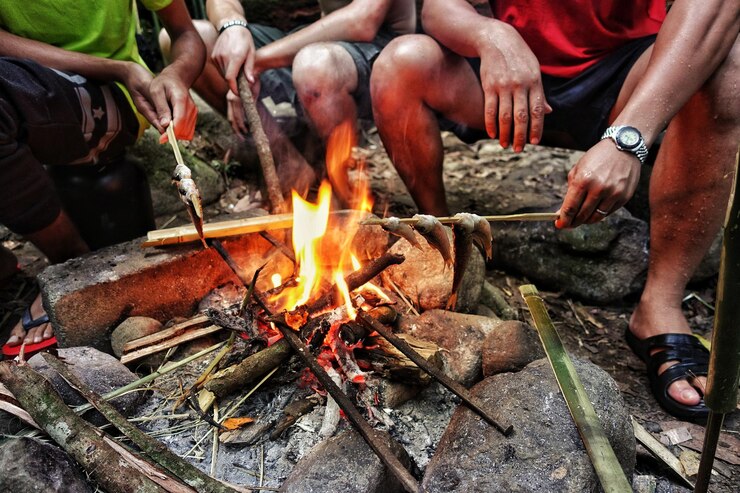The Philippines, known for its rich biodiversity and over 7,000 islands, also harbors a deep cultural tapestry that dates back centuries. While many travelers flock to its beaches or hike its mountains, a growing number of adventurers are seeking deeper, more meaningful experiences through cultural immersion. One of the most rewarding ways to do this is by camping with indigenous communities — living close to the land while learning from those who have preserved age-old traditions and a deep respect for nature.
This form of travel doesn’t just satisfy a sense of wanderlust; it fosters empathy, breaks down cultural barriers, and offers profound insight into indigenous ways of life. From the Cordilleras in Northern Luzon to the ancestral lands of Mindanao, camping in indigenous villages offers a unique way to connect with the Philippines’ cultural roots.
Why Choose Indigenous Camping?
Camping experiences within indigenous communities go far beyond sightseeing. Travelers become part of the rhythm of everyday life — rising with the sun, helping cook meals over open fires, participating in age-old rituals, and engaging in conversations that reveal oral histories rarely found in books.
This type of travel supports community-based tourism, where your presence contributes directly to local economies. Instead of staying in commercial resorts or cookie-cutter hotels, your tent is pitched on sacred ground, and your view includes not just mountains and rivers but heritage preserved through generations.
Where to Experience It
The Philippines is home to a diverse array of indigenous groups, each with unique customs, languages, and spiritual beliefs. Some of the most notable communities offering immersive camping experiences include:
1. The Kalinga People of Northern Luzon
Located in the remote Cordillera Mountains, the Kalinga region is famed for its rice terraces, traditional tattooing, and warrior heritage. Visitors can camp in villages like Buscalan, where you may have the rare opportunity to meet mambabatok (traditional tattoo artists), including disciples of Apo Whang-Od, the last traditional tattooist of her generation.
Life in the Kalinga villages is rooted in farming and communal living. As a guest, you’ll share meals with the host family, hike terraced slopes, and maybe even help harvest rice if you arrive during the right season.
2. The Aeta Communities of Central Luzon
Among the earliest inhabitants of the Philippines, the Aeta are known for their intimate knowledge of the forest and traditional survival skills. Some Aeta communities in Zambales and Tarlac offer guided camping trips, where guests can learn to track animals, cook using bamboo, and gather medicinal plants.
Evenings are often spent around a fire, listening to elders share folk tales and ancestral songs. It’s not about a checklist of tourist activities; it’s about slowing down and absorbing wisdom that’s been passed from one generation to another.
3. The Talaandig and Higaonon Tribes of Bukidnon
In Mindanao’s highlands, the Talaandig and Higaonon communities offer visitors a glimpse into a culture that deeply honors both land and spirit. These communities welcome campers into their ancestral domains, often with rituals that involve chanting, offerings, and communal dances.
Bukidnon’s lush landscapes provide the perfect backdrop for eco-cultural experiences. Days may include foraging for food, working on a traditional loom, or helping build earth ovens used in community feasts.
What to Expect
Camping with indigenous communities means letting go of certain comforts — but that’s where the magic lies. Accommodations range from basic huts made of bamboo and cogon grass to your own tent under the stars. You might have to fetch water from a nearby spring, wash in the river, or share meals cooked on a traditional clay stove, instead of a superkalan burner. A clay stove uses less wood and emits less smoke, widely respected for its efficiency in rural areas.
Bathrooms are often minimal or communal, and cellular signals can be weak or nonexistent. But in place of screens and notifications, you’ll have long conversations, shared meals, and unforgettable stories.
This kind of camping cultivates humility. You become more mindful — of your environment, your impact, and the people who call these places home.
How to Prepare
Proper preparation is key to ensuring a respectful and rewarding experience. Here are some tips to help you get ready:
-
Do your research. Learn about the specific customs, taboos, and expectations of the community you’ll visit. Some places may have restrictions on clothing, photography, or behavior.
-
Pack responsibly. Stick to essentials. Bring biodegradable toiletries, reusable containers, and a trash bag for your waste. Leave no trace is a principle to live by.
-
Bring appropriate gear. Waterproof tents, sleeping bags, and insect repellent are a must. Since you’ll be staying in remote areas, make sure you have enough food and clean water — or at least water purification tools — especially if the host community recommends it.
-
Support local vendors. Before your trip, you might need to visit one of the many camping equipment stores in urban centers like Manila or Cebu to gear up. Look for eco-friendly and compact items suitable for rural terrains.
-
Practice cultural sensitivity. Remember, you’re a guest. Listen more than you speak, ask permission before taking photos, and show appreciation through your actions — not just words.
The Deeper Rewards of Cultural Camping
What separates indigenous camping from any other outdoor experience is the profound cultural exchange that happens when you live, even briefly, as others do.
You’ll see how traditional knowledge, like herbal medicine or rain-based farming calendars, still thrives. You’ll gain new perspectives on sustainability, family, and what it truly means to live in harmony with the land.
Perhaps most importantly, you’ll witness the strength and resilience of communities that have held on to their identity despite centuries of colonization, modernization, and environmental challenges.
Responsible Travel and Respect
As immersive as the experience can be, travelers have a responsibility to approach indigenous camping with respect and mindfulness. This isn’t an amusement park or a photo op. It’s a chance to witness the lives of people who are gracious enough to open their homes and hearts.
Work with community-vetted guides or NGOs that collaborate directly with indigenous leaders. Avoid engaging in activities that commodify or romanticize culture. And always ask yourself: Am I here to take something, or to learn something?
Final Thoughts
Indigenous community camping in the Philippines is not for everyone. It requires openness, adaptability, and a sincere desire to connect. But for those willing to step out of their comfort zones, the rewards are unforgettable.
You’ll come home with more than just stories. You’ll carry with you the laughter of children chasing goats at sunset, the aroma of rice cooking over wood fire, and the quiet wisdom of elders whose lives speak louder than any textbook ever could.
So, if you’re planning your next adventure and looking for something beyond the typical trail, consider packing your bags — and your values — for a journey that brings you closer to the roots of Filipino identity. You just might find a different version of yourself, reflected in the mirror of a distant mountain village.



